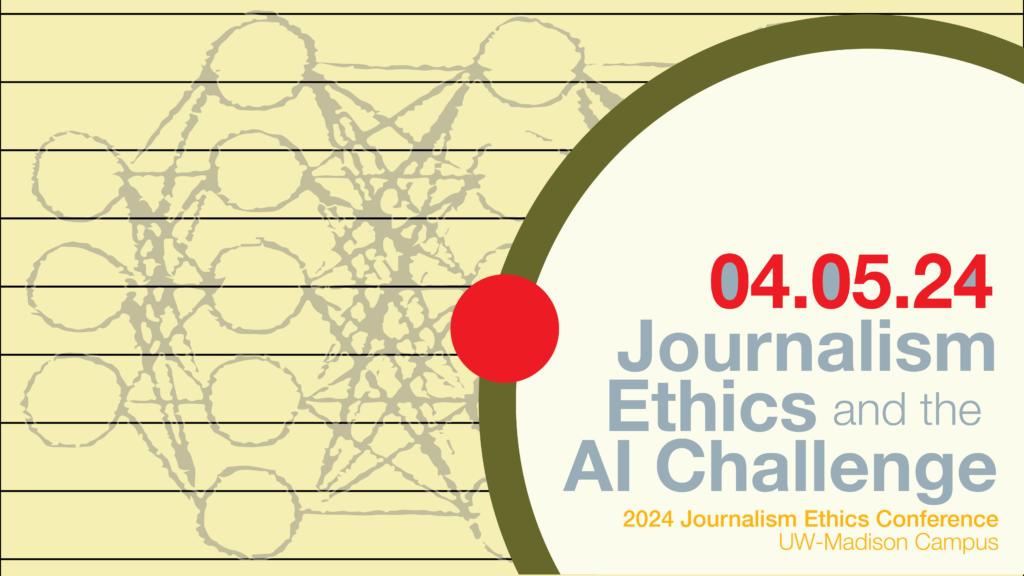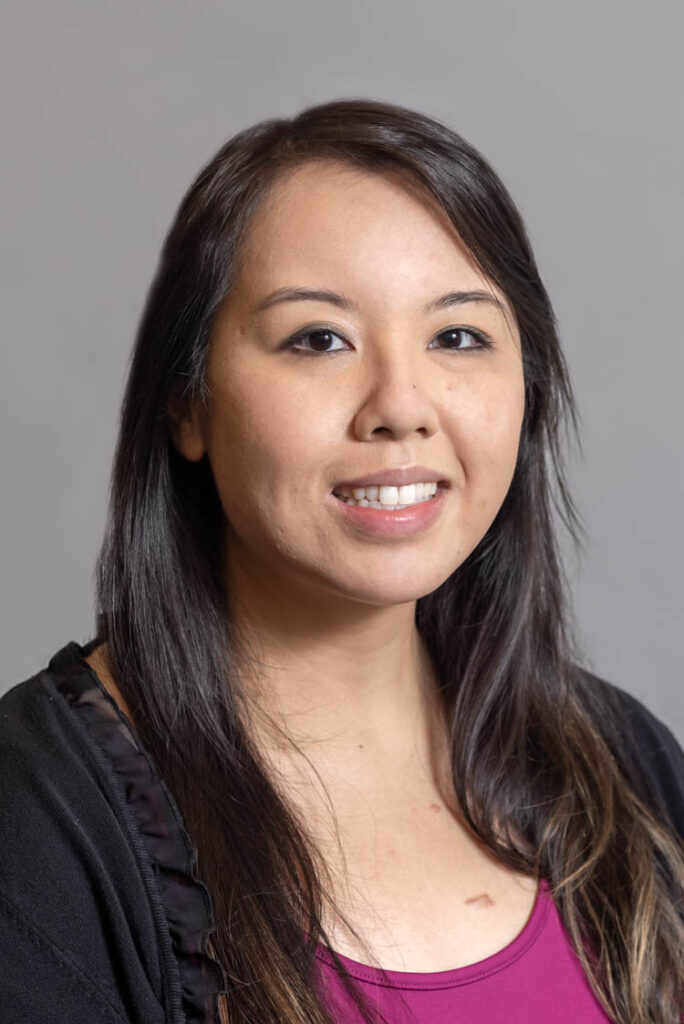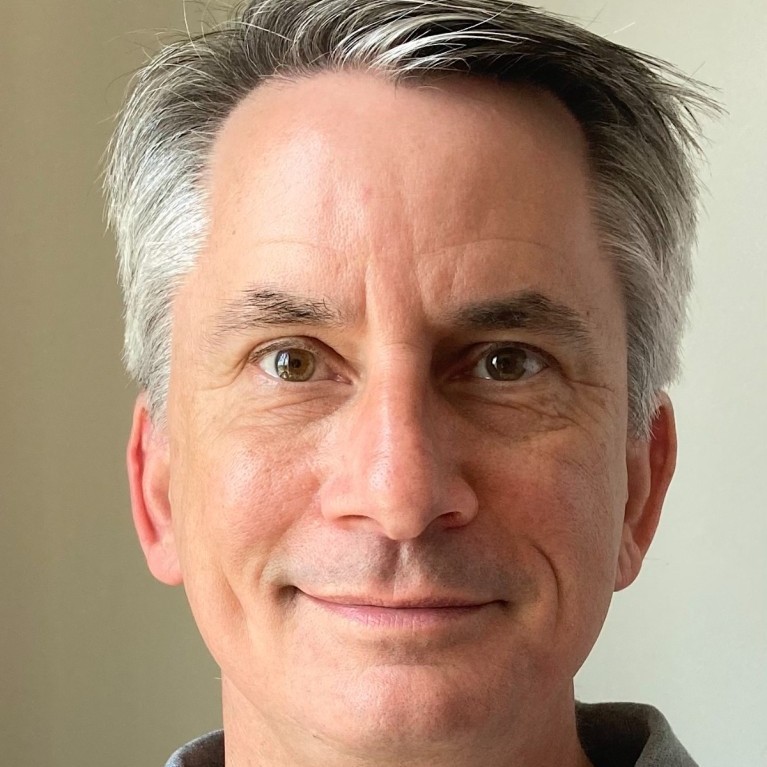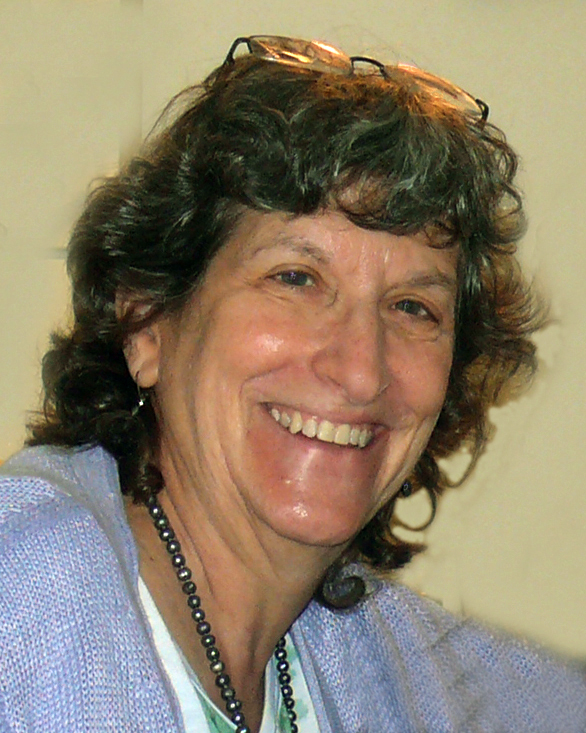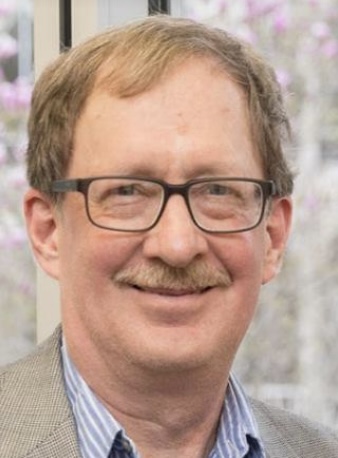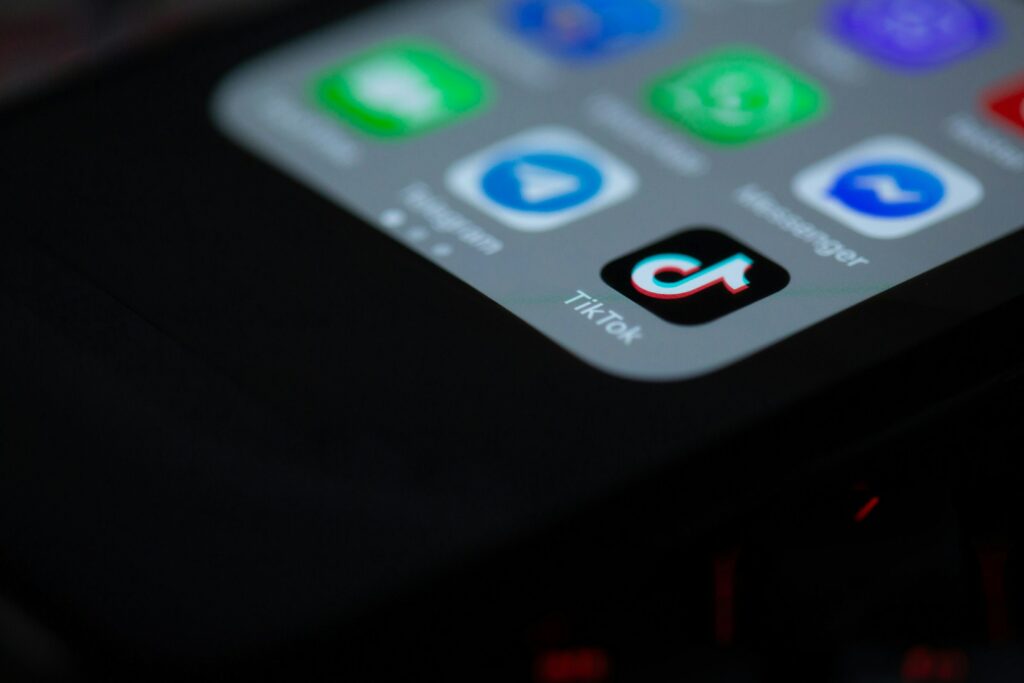
Hannah Ritvo is a 2023-24 fellow at the Center for Journalism Ethics and an undergraduate student in the School of Journalism and Mass Communication at the University of Wisconsin–Madison.
When Josh Helfgott was a child, he didn’t see queer individuals in the mainstream media.
“I felt so incredibly alone,” Helfgott said. “There was no LGBTQ+ representation in general. There were no gay people as far as I could see.”
Helfgott now runs a TikTok account called “Gay News” that is dedicated to educating and informing a global audience about LGBTQ+ news, issues and history.
He elevates stories he doesn’t think will get heard otherwise, platforming local news stories to over 5.5 million followers.
Helfgott is just one of thousands of TikTok influencers who are using the platform to share news stories. These influencers aren’t the only ones – major news organizations, including the Washington Post, the New York Times and the Wall Street Journal, have also created their own TikTok accounts to reach new audiences.
Americans are increasingly turning to TikTok to get their news. A 2023 Pew Research poll found more than 14% of U.S. adults say they regularly get news from TikTok, up from 3% in 2020. This trend is more pronounced among the younger generation, with a third of 18- to 29-year-olds regularly consuming news on TikTok.
TikTok’s emergence as a global news source allows social media influencers to educate and mobilize individuals. However, it is crucial for social media users to understand the limitations of news presented in short form-videos and to establish a set of practices to verify and fact-check the information they encounter online.
Why are people sharing news on TikTok?
Although TikTok is a recent phenomenon, Stephanie Edgerly, a Northwestern University professor and Associate Dean of Research, said there is nothing new about having an influencer stand between audiences and the news media.
“Audiences oftentimes need a person who they trust and they relate to that will take what journalists are covering and translate it in an accessible way,” said Edgerly, who adds that we have seen this occur before with bloggers and television correspondents.
Edgerly researches news avoidance and how features of new media alter the way individuals consume news.
Young people turn to TikTok and other social media sites for news consumption because they don’t feel the news is relevant to their lives, she said. Influencers are able to engage younger audiences by relating stories to their audiences and showing them what the stakes of news stories mean for them.
In general, Edgerly believes the mixing of news and entertainment is advantageous for many, because it provides an alluring way for individuals to engage with information.
Younger audiences are able to easily and quickly consume news in a convenient, familiar space when they use TikTok. Many influencers translate the information they are sharing into entertaining, digestible and relatable short-form videos, which Edgerly said is particularly appealing for news avoiders.
Michael Spikes, a Northwestern lecturer and co-founder of the Illinois Media Literacy Coalition, said social media apps like TikTok have helped democratize content.
“In the past, we had gatekeepers who essentially chose what information could be published in certain outlets,” Spikes said. “We now hear many more perspectives than we used to, and many more points of views than we used to.”
This diverse media ecosystem has allowed Josh Helfgott and other TikTok influencers to reach a wide audience. Helfgott said his TikTok account gives him the ability to share stories with audiences who wouldn’t otherwise hear it.
“I’m floored, when I ask my audience to take an action, the quantity of people that do is astounding to me,” Helfgott said. “It’s really inspiring – it makes me believe I have the power to make some change in this world.”
In addition to informing and educating users, TikTok influencers can also mobilize audiences.
“I’ve registered tons of people to vote,” Helfgott said. “We’ve had hundreds of thousands of signatures go to the FDA in regards to their blood ban against gay men donating blood, and [the FDA] did take action afterwards.”
After the FDA eased their restrictions on gay and bisexual men donating blood, Helfgott made a video thanking over 200,000 of his followers for signing a petition to ease restrictions.
Ethical concerns
Despite these benefits, there is plenty to be wary about concerning news consumption via social media. Social media sites can easily contribute to the spread of misinformation and bias, and most come with a lack of ethical guidelines for creators.
Edgerly said TikTok influencers might not attribute their content or note where they are getting their information from.
“Should we be giving influencers the latitude and attention that we would provide to a journalist?” Edgerly asked. “Are we critiquing what is being shown? Do [TikTok influencers] have expertise and trust?”
Given that many users use TikTok and other social media sites as outlets for entertainment, users may be less inclined to scrutinize the information they consume.
Helfgott keeps this in mind when he creates his videos, following a strict process to ensure he is reporting ethically and accurately. He said distilling a complex story into a short time frame while maintaining accuracy can be hard.
“I spend hours and oftentimes days, writing and rewriting simple stories to get them into punchy, factual soundbites.”
Helfgott begins with extensive research, analyzing articles and videos from news organizations, before bulleting out the story’s major facts. He then weaves a narrative that grabs an audience’s attention, condensing longer articles into short, snappy stories that keep audiences engaged.
With younger audiences relying heavily on TikTok influencers and other social media sites for their news, some experts and journalists also worry about the impact on traditional news outlets.
As the news industry faces a series of closures and layoffs, some journalists worry social media influencers are pulling readership and revenue away from traditional news outlets and even profiting from their work.
Edgerly conducted a survey of journalists in which 79.3 percent of respondents said social media negatively impacts the journalism industry. More than 1,500 respondents completed the survey, and most believed social media platforms contribute to inaccurate and one-sided news accounts. 94.3 percent of respondents blamed social media for spreading inaccurate news.
TikTok’s algorithm presents a whole other set of ethical concerns, Spikes said.
“We get a lot of information tailored to our own personal beliefs and values,” he said. “We don’t get lots of information that might challenge those views.”
News organizations that have chosen to join TikTok to disseminate their news face ethical concerns, as well, including the risks presented by investing resources in platforms they can’t control. Edgerly said news organizations that took to similar platforms like Facebook and Twitter to share their work should understand the implications.
“These companies are not guided by journalistic values,” Edgerly said. “They can change their algorithm and change what they’re promoting. You don’t want to be caught in that chasm.”
After studying media literacy for over 15 years, Spikes takes an “almost zero trust stance” toward the information he consumes on social media. Even so, he takes steps to verify the online information he does view, and he believes it important that all social media users take similar steps.
“I try to self-curate sources that I know have educated themselves on a subject either by having lots of experience with it or reporting on it in the past,” said Spikes, who hopes the videos he watches will offer him context and evidence.
As news consumption transforms with changing times, he believes it is critical that individuals on social media create healthy habits and practices.
“It is becoming more and more important to know more about the ways that media can change and shape our perceptions of the world so we can continue to challenge what those things are.”
The Center for Journalism Ethics encourages the highest standards in journalism ethics worldwide. We foster vigorous debate about ethical practices in journalism and provide a resource for producers, consumers and students of journalism. Sign up for our quarterly newsletter here.

